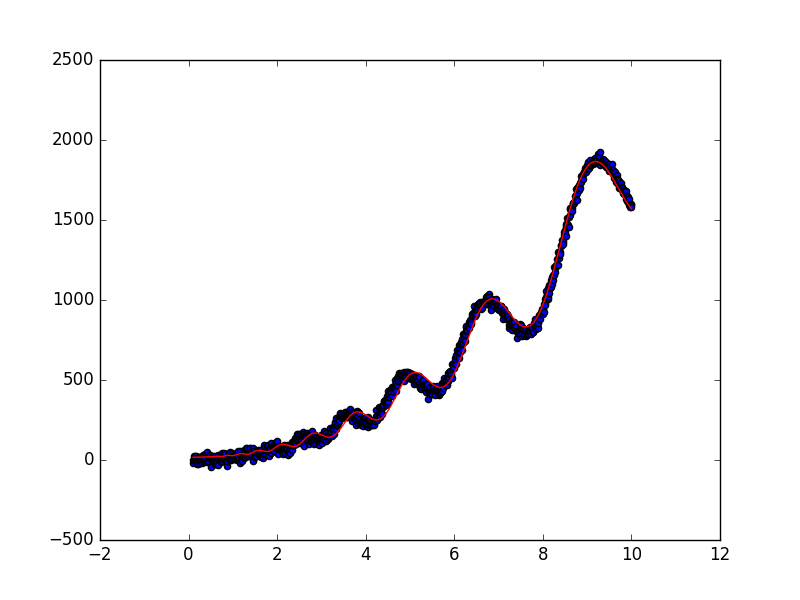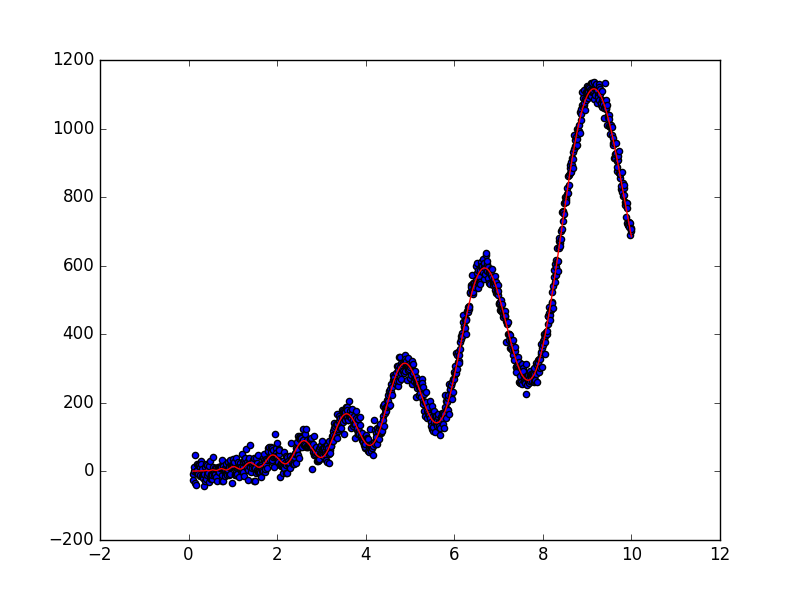Log-periodic power law (LPPL) type behavior is interesting for a number of reasons. There is a certain amount of empirical evidence and belief that it is fundamental to many critical phenomena -- material rupture, earthquakes, and financial bubbles, to name a few. For a bit of background see the docs and follow the references!
Here we consider the following generic log-periodic model:
Interestingly, LPPL is in a class of functions which have many local minima, when attempting to fit. This means that generic fits are pretty terrible, as can be seen here. Additionally there is the curious feature that, if we attempt to fit a least squares slightly away from the true parameter values, we still may never find the global minimum, or the best fit. This can be seen in the following graph, where the parameters are
p_true = {20, 2, 1, -2, 0.5, 3.0}
and the initial search parameters are
p_initial = {21, 2, 1, -2, 0.5, 3.0}
with
p_fit = {21.4, 2, 1, -2, 0.5, 3.0}.
There are a number of solutions to this problem, many of which require heuristic algorithms, which will find good solutions in these situations. For the situation of many local minima, the algorithms generically hop around parameter space, with some probability. This is in contrast to many fitting methods that zero in on the minimum, and are likely to get trapped. These heuristic algorithms include: simulated annealing, evolutionary algorithms, tabu search, and others.
Below we have scipy's basinhopping fit, where the parameters are
p_true = {20, 2, 2, 0.5, 3}
and the initial search parameters are
p_initial = {1, 1, 1, 1, 1}
with
p_fit = {20.00, 2.01, 0.95, 0.50, 1.0, 2.94}


